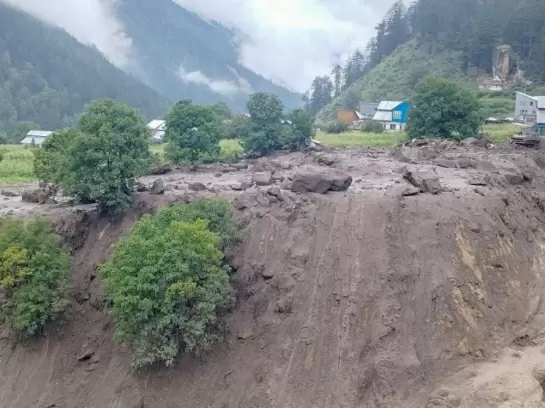Underwater glaciers melting much faster than predicted
27-July-2019
Underwater melting of tidewater glaciers is occurring much faster than was predicted, said researchers. They used a new approach to directly measure submarine melt, which could enhance projections of sea level changes.
The findings published in the journal Science could lead to improved forecasting of climate-driven sea level rise, based on a new method developed by the researchers.
"Tidewater glaciers around the globe -- in Greenland, Alaska, Antarctica and beyond -- are retreating and raising sea levels globally, submarine melting has been implicated as a trigger for this glacier retreat, but we have had no direct measurements of melting, let alone how it might vary in time," said study co-author Rebecca Jackson from Rutgers University in the US.
"Our study shows that the prevailing theory significantly underestimates melt rates. These results suggest a stronger coupling between the ocean and glacier than previously expected and our work provides a path forward to improve our understanding of how the ocean impacts glaciers," Jackson said.
For the findings, the researchers studied the underwater melting of the LeConte Glacier, a tidewater glacier in Alaska, from 2016-2018.
The research team used sonar to scan the glacier's underwater face; downstream measurements of currents, temperature and salinity to estimate the meltwater flow; radar to measure the glacier's speed above water; time-lapse photography to detect iceberg calving; and weather station data to measure the surface melt from the glacier.
They then looked for changes in melt patterns between August and May.
They found that melt rates are significantly higher than expected across the whole underwater face of the glacier -- in some places 100 times higher than theory would predict.
"We also found, as expected but never shown, that melt rates are higher in summer than in spring, and that variations in melt rates across the terminus cause overcutting and undercutting," Jackson said.
While the study focused on one tidewater glacier, the new approach should be useful to researchers who study melting at other tidewater glaciers around the world, which would help to improve projections of global sea level rise.
According to the researchers, the results also align with several recent studies of other glaciers that have indirectly suggested that theory under-predicts melting. IANS
Tejashwi Yadav Says Two NDA leaders Hold Dual Voter IDs, Questions EC’s Impartiality
Once Jayalalithaa’s Delhi Voice, V. Maitreyan Joins DMK
No Pillars, Just Water: China’s Floating Bridge Draws Tourists
BJP vs BJP Contest at Constitution Club: Rudy Extends Two-Decade CCI Tenure
Chennai Startup Bags $1 Million to Put Indian Mangoes on the World Map









